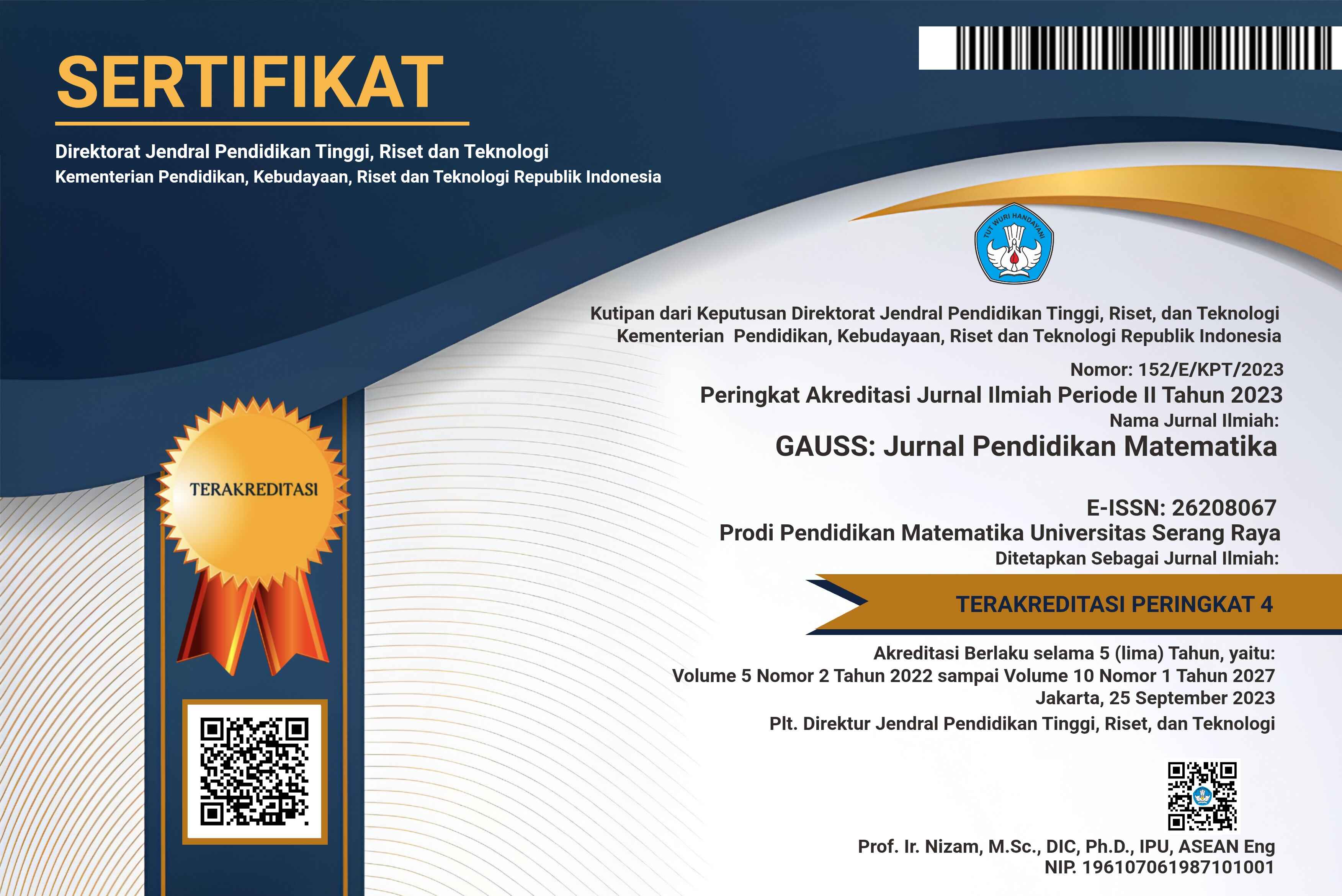The Effect of Multiliteracy Learning Model on Critical Thinking Skills Reviewed from Self-Regulation
DOI:
https://doi.org/10.30656/gauss.v8i1.9831Abstract
Abstract
As a prospective teacher, it is important for a student to master the 21st century skills, namely the 4Cs. Critical thinking is one of the directions of education in the 21st century. As prospective educators, students need to master critical thinking skills supported by good independent learning as a provision so that they will be able to do meaningful learning in the classroom. This study aims to determine the effect of the application of the multiliteracy learning model on critical thinking skills reviewed from the self-regulation of students. The research uses a quantitative approach, with a type of quasi-experiment design research with a test test research design. Based on the result of the hypothesis test using a two-way ANOVA test with different cells, that is, the result if p−Value ≤0.05 so H0 rejected, but if p−Value >0.05 so H0 Accepted. With the details namely, H0A∶0,000≤0,05 which means H0 rejected, H0B∶0,000≤0,05 which means H0 rejected, and H0AB accepted because of the value p−Value (Sig.) on self-regulation and multiliteracy learning model = 0.374 more than α=0.05 (p−Value (Sig.)>α). Referring to these results, it can be seen that the multiliteracy learning model has an effect on students' critical thinking skills, self-regulation has an effect on students' critical thinking skills, and there is no interaction between the multiliteracy learning model and the level of self-regulation on critical thinking skills.
Keywords: Multiliteracy, Critical Thinking Skills, Self-Regulation
Downloads
Published
Issue
Section
License
Copyright (c) 2025 Mia Nurhidayah, Bambang Sri Anggoro, Fraulein Intan Suri

This work is licensed under a Creative Commons Attribution-NonCommercial-ShareAlike 4.0 International License.
Authors who publish articles in GAUSS : JURNAL PENDIDIKAN MATEMATIKA agree to the following terms:
- Authors retain copyright and grant the journal the right of first publication with the work simultaneously licensed under a Creative Commons Attribution-ShareAlike 4.0 International License that allows others to share the work with an acknowledgment of the work's authorship and initial publication in this journal.
- Authors are able to enter into separate, additional contractual arrangements for the non-exclusive distribution of the journal's published version of the work (e.g., post it to an institutional repository or publish it in a book), with an acknowledgment of its initial publication in this journal.
- Authors are permitted and encouraged to post their work online (e.g., in institutional repositories or on their website) before and during the submission process, as it can lead to productive exchanges, as well as earlier and greater citation of published work (See The Effect of Open Access).




